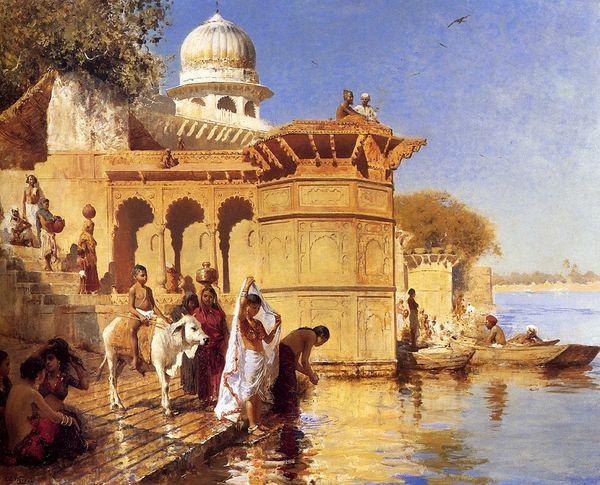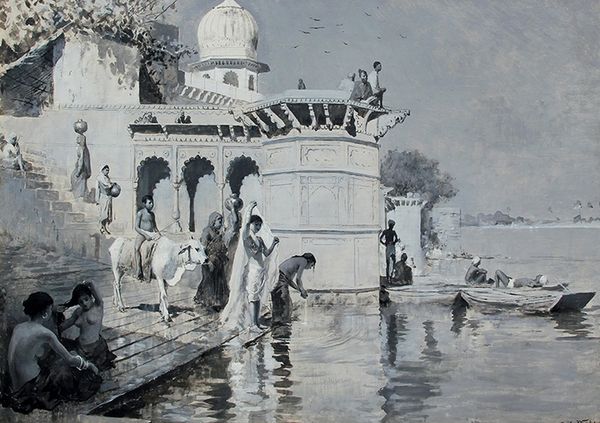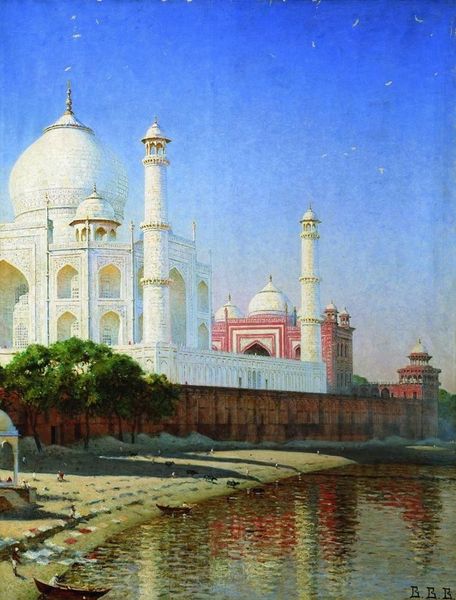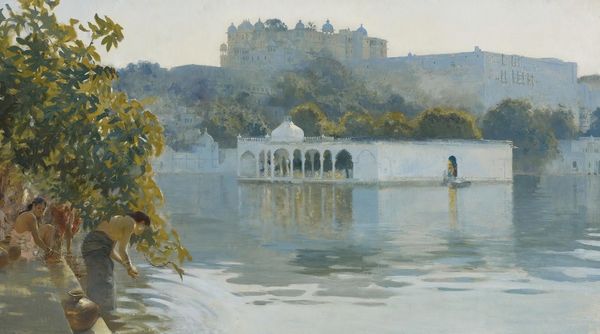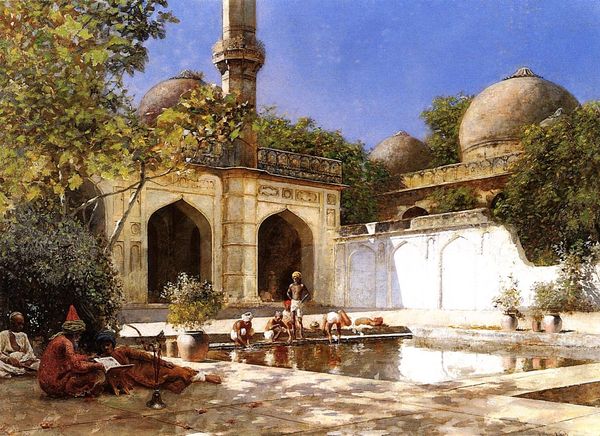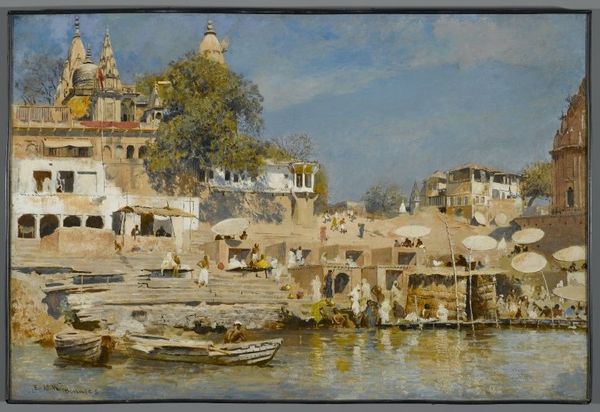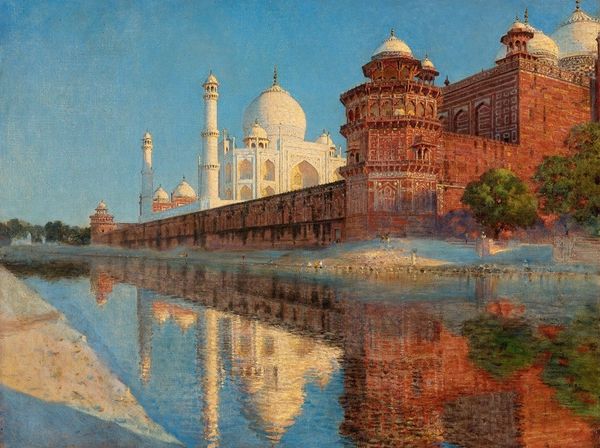
painting, oil-paint
#
painting
#
oil-paint
#
landscape
#
oil painting
#
orientalism
#
cityscape
#
genre-painting
#
realism
Copyright: Public Domain: Artvee
Curator: Here we have Edwin Lord Weeks' "Along the Ghats, Mathura," dating back to around 1880. An oil painting depicting everyday life in India. What are your first impressions? Editor: It's quite striking. The warm, sun-drenched palette really brings out the textures – the stone architecture, the fabrics, even the water itself. It all feels so tangible. Curator: Weeks was part of the Orientalist movement, and paintings like this played a key role in shaping Western perceptions of the East. The public's fascination with exotic locales fueled a market for these depictions. Editor: Precisely! And that brings to mind the means of production here. He obviously had the financial backing to travel, acquire materials, and spend the time required to create this level of detail. The labor involved – from pigment creation to the canvas preparation – it’s a network. Curator: Certainly, there's a power dynamic embedded in this gaze. Weeks, an American artist, is presenting his version of Indian life to a Western audience. His style, rooted in Realism, lends a sense of authenticity, even though it's still a constructed reality. Editor: I see what you mean, but look closer at the way the ghats are painted. The individual brushstrokes, the layered application of oils, creates a richness you wouldn't find in a mere documentary photograph. He’s emphasizing the built environment and how human labor has formed that riverfront. Curator: And consider the composition, too. The ghats act as a stage for these daily activities, from bathing to transportation, but they're activities often simplified and presented through a western lens of romanticism and adventure. Editor: I agree; the subject is very busy. From the figures leading the cattle to the boats unloading goods along the bank – but they were not constructed in a bubble! Think of all the anonymous artisans that went into creating these materials and goods that we're glimpsing. Curator: Absolutely. This artwork serves as a window into a specific historical moment, showcasing how art and culture became intertwined with colonial narratives. Editor: And it encourages me to examine not just what's represented but how it was made, consumed, and then integrated into the cultural landscape of both East and West. A beautiful demonstration of interconnected creative economies across different material forms and the labor required for those networks.
Comments
No comments
Be the first to comment and join the conversation on the ultimate creative platform.
